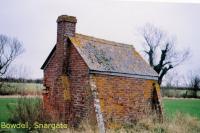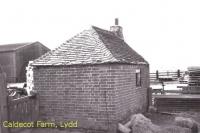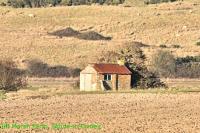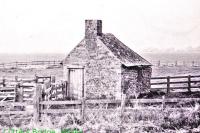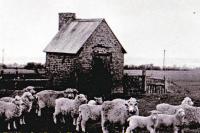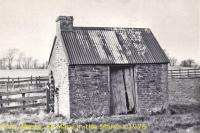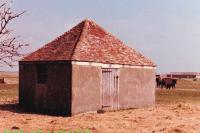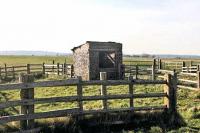Lookers’ Huts
In the eighteenth and nineteenth centuries, the Romney Marsh was home to thousands of sheep and to the shepherds, known as Lookers, whose lonely job it was to look after them. These lookers tended numerous huge flocks of sheep over a vast area which meant that they had to spend long periods away from home, and these small, sparse, brick-built huts provided their only shelter. The Marsh is now dotted with these ruined huts, with less than 20 remaining from more than 350 in the area's agricultural heyday.
Built of brick about 10ft square, with Kent peg-tile roofs, bare rafters and a chimney, they were very functional in design. All had a small window and a fireplace, but with very little in the way of domestic comforts. The bigger huts had a shed beside them for keeping a cow.
Local historian Ted Carpenter remembers when the last lookers were operating, in the Fifties, but says by then they were a different species. "The old lookers were real characters. But the system of living out on the Marsh at certain times of the year had ended by the Thirties. By my time they were really just shepherds, working for a single farmer, whereas a real looker was self-employed and looked after the flocks of several farms at once."
The Romney Marsh Looker's Hut should be distinguished from sheepcotes and sheephouses found elsewhere in Britain which were used solely to house animals.
![]() Photo Gallery of Lookers' Huts
Photo Gallery of Lookers' Huts
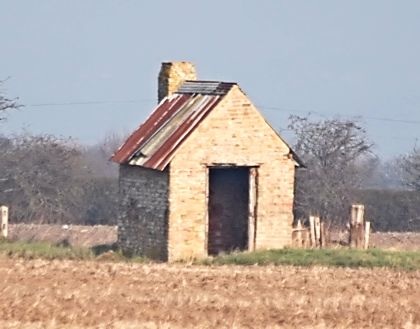
A Lookers' Hut near Dymchurch today
In contrast to those, the Marsh Sheephouse was the exclusive domain of the Looker who used the hut as temporary accommodation while tending the flocks, a store for his tools and medicines, and an operational base for his shepherding work.
Lookers
The lookering system emerged when, in the aftermath of the Black Death in the Middle Ages, absentee landowners began buying farms and tracts of land on the depopulated marsh and amalgamating them into estates. The lookers were paid to oversee vast flocks and had to cover a large amount of terrain in a single day, often walking many miles.
Such a system required easily manageable sheep, as well as resourceful lookers. The Romney sheep were bred for the area, and could fend for themselves rather than needing close shepherding. They are superb grazing animals, and extremely docile. They won't jump ditches.
Given the great acreage and number of sheep they were responsible for the lookers didn't want anything that would waste their time by causing trouble, and any miscreants were quickly extracted from the flock.
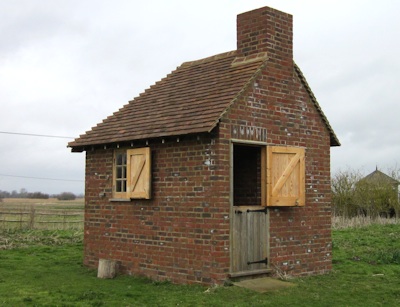
A Reconstructed Lookers' Hut
Through careful breeding, the Romney established a global reputation for hardy dependability, and meat and wool quality.
The huts came into their own at lambing and shearing time. They were used to store tools, but the looker could be holed up in one for up to six weeks in the lambing season, relying on his family to bring him provisions. In their heyday, there were probably up to 350 huts on the marsh – today there are barely a dozen.
During World War Two, most of the marsh was ploughed for cereals. The large flocks never returned – only a third of the marsh today is down to pasture.
Reconstructed Lookers Hut
You can see a reconstructed Lookers Hut at the Romney Marsh Visitor Centre. Based on the remains of a hut at Cutters Bridge, Midley this hut was built at the Romney Warren Country Park and is the only publicly accessible hut on Romney Marsh.
Find out more ![]() Monograph: Sheep-keeping and Lookers’ Huts on Romney Marsh
Monograph: Sheep-keeping and Lookers’ Huts on Romney Marsh
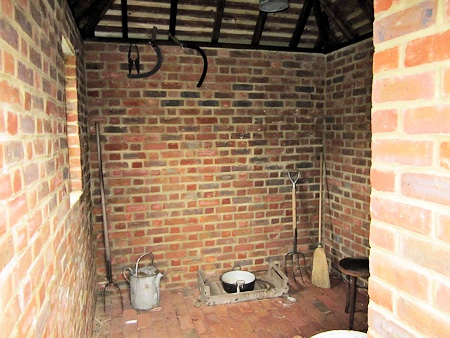
Inside a Reconstructed Lookers' Hut
Photo Gallery of Lookers' Huts scroll right and left and click on a picture to see it enlarged in a slideshow Ack. 25


